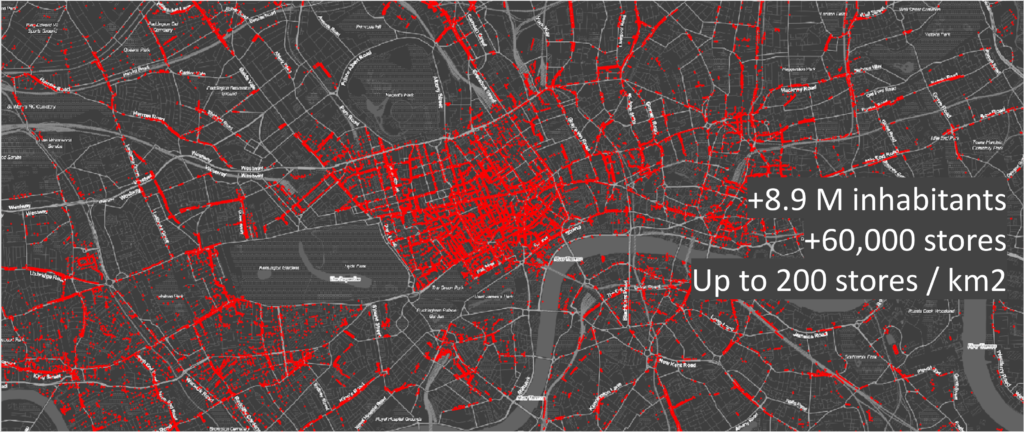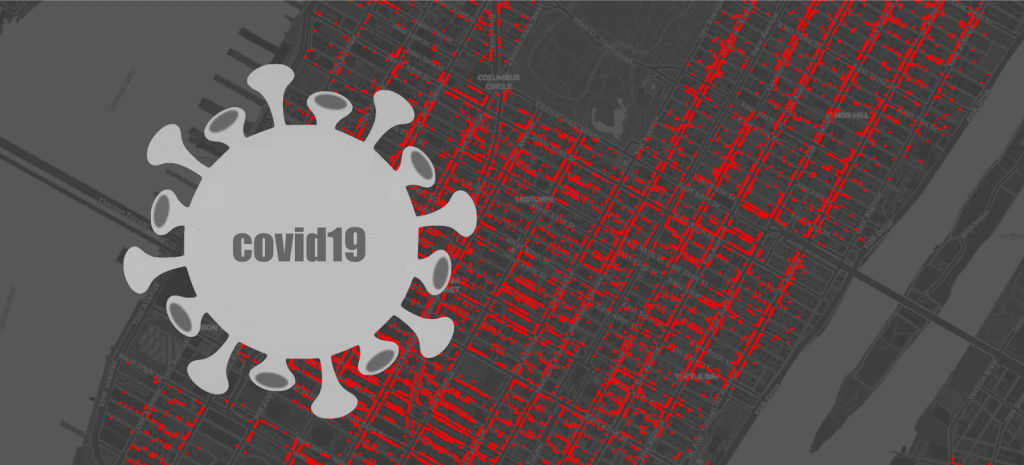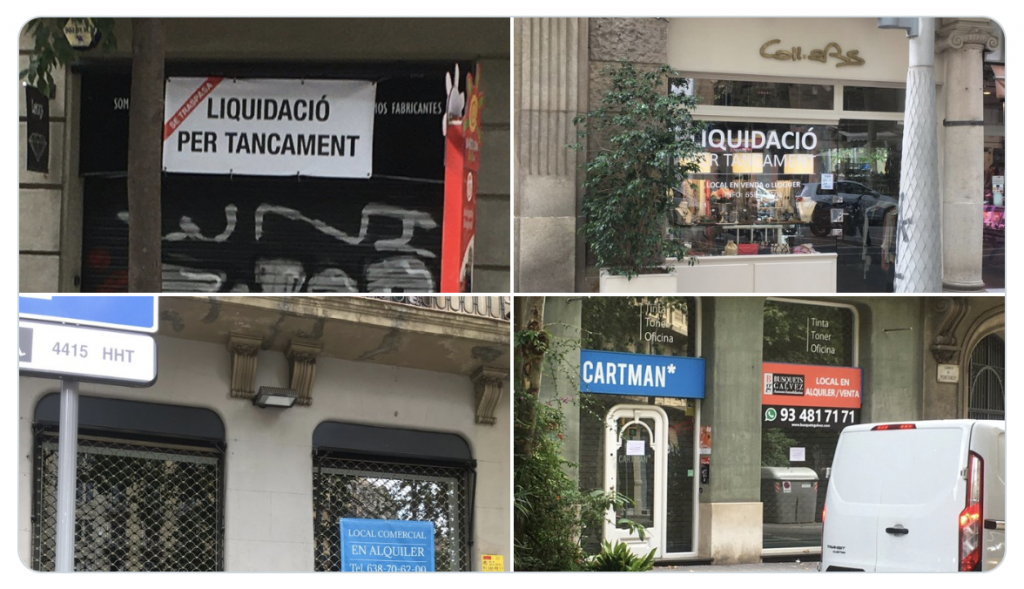Més del 30% dels locals comercials catalans són locals tancats o buits. D’aquests, una part seran ocupats en algun moment per activitat comercial i, la resta, seran locals buits persistents. Per poder actuar i donar-lis un ús final, abans cal poder-los distingir. Com ho fem?
Continua llegintQuan la rotació va salvar el comerç.
La rotació comercial és bona o dolenta?
A finals de 2019, mesos abans de començar la pandèmia, vam analitzar la rotació comercial de Barcelona en els darrers 10 anys.
Vam fer un informe que vam publicar en aquest article.
Ens preguntàvem com funcionava la variació interanual d’establiments, la substitució dels preexistents pels nous. A quines àrees el teixit comercial canviava més ràpidament? A quines es mantenia relativament estable?
Un cop vam establir els valors de la variació interanual per barris, vam obtenir aquest mapa de l’Índex de Rotació Comercial (IRC):
L’estudi dels clústers per entendre l’evolució comercial de les ciutats
Els comerços obren i tanquen, depenent del carrer amb més o menys periodicitat, però els canvis són habituals en totes les ciutats i especialment en les zones comercialment més potents.
Per analitzar l’evolució del comerç de les ciutats al llarg del temps és important avaluar-lo a partir dels clústers. És a dir, de la concentració de comerços d’una mateixa tipologia. Tenir un clúster, per tant, vol dir tenir un àrea especialitzada en un sector concret del comerç.
Continua llegintBCN i NYC, dues capitals del comerç: Són realment comparables?
Barcelona i New York, New York i Barcelona, bé podria ser una història de dos eixamples. Per proximitat geogràfica, solem comparar Barcelona amb altres grans capitals europees, com podria ser Londres. Però és realment Londres una bona ciutat on emmirallar-nos? O dit d’una altra manera, realment els anglosaxons haurien de comparar Manhattan amb Londres?
Continua llegintOn poso el meu negoci? Les píndoles d’EIXOS amb Ràdio Comerç
EIXOS ha estat col·laborant amb Ràdio Comerç des del seu inici enmig de la pandèmia. Aquests últims 4 mesos hem estrenat una secció per explicar la metodologia que emprem per recomanar als emprenedors les millors localitzacions per posar el seu negoci. De la mateixa manera també analitzem per a franquícies i/o multinacionals on fer una expansió comercial.
Les píndoles d’EIXOS duren 15 minuts de mitjana i les explicacions venen acompanyades d’una presentació gràfica per visualitzar les dades que es van comentant.
Us deixem amb els 5 primers vídeos d’aquesta col·laboració:
1.- On obrir una llibreria a Premià de Mar?
LA MAGNITUD DELS AJUTS
L’impacte de la covid19 en el comerç i l’hostaleria catalans
Mapa del tancament de negocis
Fins a un 40% dels establiments comercials i hostalers catalans podria tancar definitivament com a conseqüència de l’impacte de la covid19.
D’acord amb el cens d’establiments comercials realitzat per Eixos.cat mesos abans de la pandèmia, a Catalunya hi havia més de 125.000 establiments actius, i uns 30.000 locals tancats o buits.
London Retail Covid19 Impact
Measuring Covid19 Impact on Urban Retail
Covid19 lockdown forced retail stores to close in order to avoid contagion. As a direct consequence, many of them did not reopen. Many of them reopened, but will close soon as an effect of the social distancing rules. EIXOS Economic Observatory has developed a model to measure the impact on retail in geographic terms. This model has been combined with an other developed by a research team at Massachusetts Institute of Technology (MIT).

Impacto do Covid19 no Varejo
Apresentação do Modelo de Avaliação do Impacto do Covid 19 no Comércio Varejista nas Cidades.
A seguir disponibilizamos o video da apresentação do 23 de Julho, organizada pela Secretaria de Desenvolvimento Económico, Social e Turístico de Campinas, São Paulo.
COVID 19对曼哈顿零售业的影响

在Eixos,我们使用现场收集到的数据来阐明当前业务情况以及因业务关闭而尚未发生的情况。 我们这样做并不要成文警报者,而是因为我们坚信数据驱动的分析能让我们作出更准确的预估,从而作出更好的决策。在未来的几天,几周和几个月中,我们将发布一系列文章,分析因为疫情导致的隔离措施对城市一级零售和经济活动的影响。
阅读更多COVID19. Model de risc EIXOS / MIT
Model de càlcul predictiu de l’impacte del covid19 en el comerç.
Tan bon punt esclata la crisi del covid19 i es decreta el confinament i el tancament de negocis per tal d’evitar contagis, EIXOS inicia el desenvolupament d’un model de càlcul predictiu de l’impacte econòmic que això tindrà sobre el comerç. En paral·lel, un equip de recerca del MIT publica una proposta de model predictiu, que valora factors de risc complementaris als que valora EIXOS.

